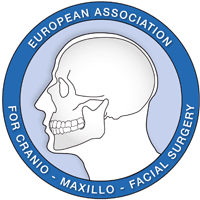Treatment with a tongue pacemaker
(This form of therapy is not used in Professor Sailer’s clinic, as it does not cure sleep apnoea.)
As pauses in and disruptions to breathing have a detrimental effect on the entire cardiovascular system, new forms of treatment such as the tongue pacemaker are being tried.
Under the leadership of Berlin Charité, trials began in 2012 to implant tongue pacemakers into those suffering from the condition. This is intended to prevent pauses in breathing during sleep and thus help to prevent snoring.
Like a heart pacemaker, the tongue pacemaker is inserted just under the collarbone of a sleep apnoea patient. A sensor that is connected to the device by a cable measures the movements of the diaphragm in the area of the ribcage and records breathing movements and frequency. If the tongue pacemaker identifies dangerous pauses in breathing, it stimulates the hypoglossal nerve in the tongue with a pulse of electricity. This keeps the tongue muscle relaxed and does prevents the tongue from falling back and obstructing the airway.
What sounds good in theory, however, has significant limitations in practice. One such limitation is that not all patient groups can be treated with this method. Criteria that exclude patients include having a small jaw, being overweight, having enlarged tonsils and existing heart conditions. Experts estimate that this complex operation can only be considered for one to two percent of patients. This is because the limiting factors mentioned above are particularly prevalent in those with sleep apnoea.
The main point of criticism for this implanted pulse generator (IPG) is, however, that the procedure does not remove the cause and thus cure the condition, but only treats its symptoms. This means that the symptoms of sleep apnoea are merely suppressed to a certain extent and only if the treatment is used regularly at night. A first large study of 126 patients, published in the “New England Journal of Medicine”, showed that a tongue pacemaker reduces the number of breathing pauses by an average of just 68%. The result is that patients are not free of the condition, even if they use a tongue pacemaker.
The operation to insert the stimulation electrode can also damage the hypoglossal nerve, which may lead to problems with tongue movements, swallowing and speech. When the IPG is connected to the electrodes, there is also a risk that larger blood vessels, such as the cervical vessels, and nerves may be damaged. In this case, additional incisions would have to be made in the neck and chest area. In rare cases, allergic reactions and intolerances to the implanted materials have also been observed. In those patients, the tongue pacemaker had to be removed in another operation.
The battery in the stimulator system must also be replaced at regular intervals. Depending on the period of use, this is necessary every 6 to 7 years and requires a new surgical procedure every time.
As the treatment with a tongue pacemaker was only introduced about 5 years ago, there is still no reliable data about long-term tolerance. The question of whether continuous use and stimulation by electrical pulses has a negative effect on the hypoglossal nerve also remains open. Even though the tongue pacemaker now has a so-called CE certification and is approved for use in Europe, there has still been no definitive assessment of its benefits and risks.




 )
)